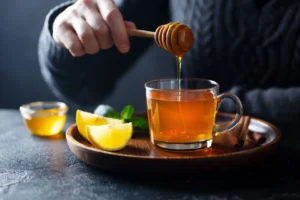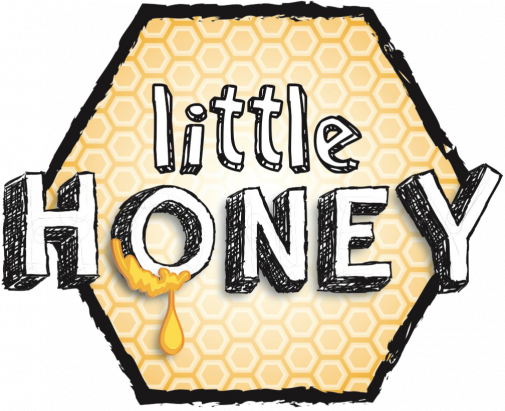
Sidr Honey Straws Specialist Singapore
Is Sidr Honey Better Than Regular Honey?
Introduction
Ever found yourself staring at two honey jars, wondering if that fancy one labeled “medicinal” is worth the extra bucks? You’re not alone. The sweet debate between medicinal honey and regular honey is buzzing louder than ever.
So, what’s the real deal? Medicinal honey isn’t just a marketing gimmick—it’s a potent, natural remedy loaded with healing goodness. And among the elite few, Sidr honey stands out like a golden crown in the world of superfoods.
Let’s explore why Sidr isn’t just sweet—it’s smart.
Table of Contents
What Makes Sidr Honey Medicinal?
Regular Honey: What You’re Really Getting
Comparing the Benefits: Medicinal vs. Regular Honey
How to Use Sidr Honey Medicinally
Final Verdict: Is Medicinal Honey Worth It?
What Is Medicinal Honey?
Medicinal honey is not your run-of-the-mill supermarket squeeze bottle. It’s raw, pure, and often unprocessed—a true gift from nature.
Key Characteristics:
- Sourced from specific medicinal plants like Sidr tree, Manuka, or Tualang
- Naturally rich in enzymes, nutrients, and antibacterial compounds
- Free from added sugars, heat treatments, or artificial enhancers
How It Differs from Regular Honey:
Regular honey is usually pasteurized, processed, and mixed with syrups. This kills off most of the good stuff—bye-bye enzymes and nutrients. Medicinal honey, on the other hand, retains all its potent healing properties.
Common Types:
- Sidr honey – prized in Yemen and Pakistan
- Manuka honey – from New Zealand, known for fighting infections
- Tualang honey – rainforest gold with anti-inflammatory effects
What Makes Sidr Honey Medicinal?
Here’s where it gets deliciously interesting.
Sidr honey comes from bees that feast on nectar from the ancient Sidr tree, a plant mentioned in sacred texts and deeply rooted in Arabian and South Asian tradition. This isn’t your average backyard blossom.
Why It’s Medicinal:
- Antibacterial properties strong enough to battle superbugs
- Packed with natural antioxidants that fight oxidative stress
- Naturally organic, with zero pesticides or additives
- Unheated and unpasteurized, preserving its rich nutrient profile
Studies have shown its effectiveness in treating wounds, digestive issues, and sore throats—all while boosting energy levels and immunity. Grandma knew best when she offered a spoonful during flu season!
Regular Honey: What You’re Really Getting
Now let’s pull the curtain back on that golden squeeze bottle in your pantry.
Commercial Processing:
Most store-bought regular honey undergoes pasteurization, killing off beneficial enzymes and reducing nutritional value. Many brands mix in sugar syrup blends to cut costs, making it more sweetener than superfood.
What’s Missing?
- Degraded nutrient content
- Lost healing properties due to heat
- Frequent use of additives and inconsistent quality
You might be thinking, “Is this even real honey?” Great question.
Comparing the Benefits: Medicinal vs. Regular Honey
| Benefits | Sidr Honey (Medicinal) | Regular Honey |
| Antibacterial | High, even effective against superbugs | Low to moderate |
| Nutrient Profile | Rich in enzymes, minerals, and antioxidants | Often degraded or diluted |
| Healing Uses | Used for wound healing, sore throats | Mostly for sweetening |
| Purity | Raw, pure, unprocessed | Frequently pasteurized or mixed |
Honestly, it’s like comparing a green smoothie with a can of soda. Both are sweet, but only one heals.
How to Use Sidr Honey Medicinally
Got a sore throat or just feelin’ run down? Sidr’s got your back.
Natural Remedies
- Mix with warm water and lemon for immune support
- Add to herbal teas to soothe sore throats
- Apply directly to cuts for wound healing and skin repair
Daily Boost
- A spoonful a day keeps fatigue away—no joke
- Stir into smoothies for a sweet energy kick
Topical Treatments
- Use on minor burns or scars
- Great for dry or inflamed skin
Safe for All Ages
It’s generally safe for children over 1 and even the elderly—just check with a doc if you’re unsure.
How to Spot Fake Medicinal Honey
The honey market? It’s kinda like the Wild West.
Label Tricks to Watch Out For
- Words like “pure” or “natural” without certification mean nothing
- Honey from unknown floral sources? Red flag
Signs of Authentic Sidr Honey
- Thick, rich, and aromatic
- Doesn’t crystallize quickly
- Dark golden in color
Certifications That Matter
Look for:
- Lab reports
- Organic certifications
- Origin details (Yemen, Pakistan)
Why Source Matters
At Little Honey, we source directly from trusted farmers who understand the power of unprocessed, organic harvests. Because not all gold is created equal.
Final Verdict: Is Medicinal Honey Worth It?
Is Sidr honey worth the hype? Absolutely.
If you’re chasing long-term health benefits and want more than just a sweetener, medicinal honey is a no-brainer. While regular honey is fine for pancakes, Sidr is what you want when your body needs a little extra TLC.
From better digestive health to glowing skin, its uses go beyond the breakfast table.
Conclusion
At the end of the day, Sidr honey isn’t just tastier—it’s smarter.
So, the next time you’re choosing between price and purity, remember: medicinal honey isn’t a splurge, it’s an investment. And with Little Honey, you’re not just getting a jar—you’re getting a tradition of wellness passed down through generations. Because sometimes, nature really does know best.
Love what you’ve learned? Dive deeper into the world of medicinal honey at Little Honey. Taste the difference, feel the healing, and never look at honey the same way again. Call Us Today!
FAQs
Can children take Sidr honey?
Yes, but only if they’re over one year old. It’s a gentle, natural way to support their immune systems.
How is Sidr honey different from Manuka honey?
Sidr is more floral and rich, while Manuka has a stronger medicinal flavor. Both are powerful, but Sidr has unique cultural and spiritual roots.
How often should I consume medicinal honey?
Daily! A teaspoon a day is enough to reap its natural superfood benefits, especially during seasonal changes or flu season
Share this post :
Categories
Latest Post


Benefits of Kashmiri Sidr Honey With Ceylon Cinnamon Powder

Top 6 Reasons Why You Should Choose Sidr Honey Singapore





